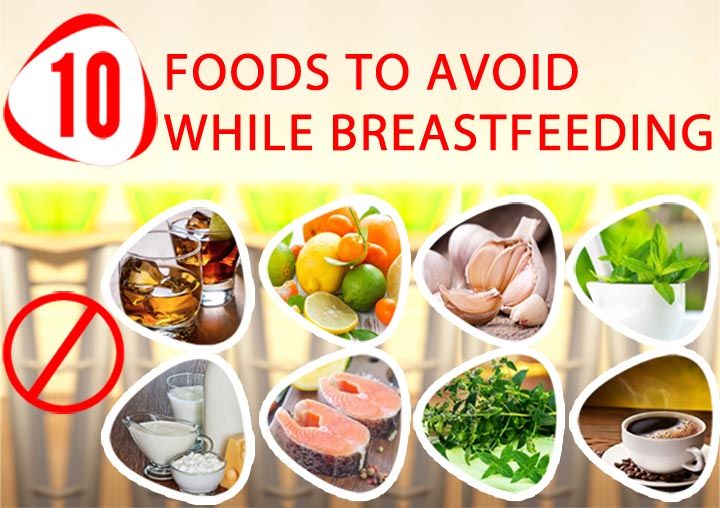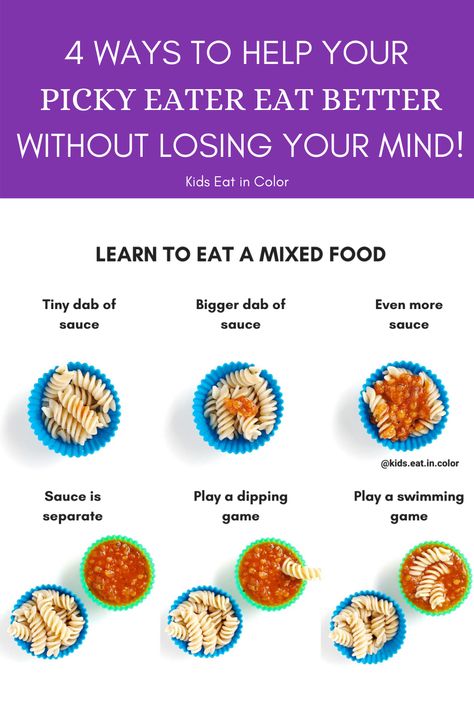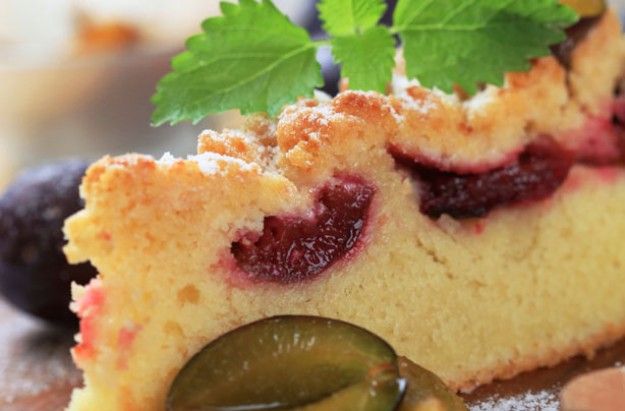Babylicious frozen baby food
Brand Builders: Babylicious
Babies are the most demanding of customers. First, there is the question of when to move them from breast or bottle to solid foods, and then what, precisely, to feed them. The inter-related trends toward healthier eating, organic foods and obesity avoidance can reach hysterical levels when it comes to doing the right thing.
For any harassed parent who has tried to prepare plaice with courgette in a tomato and basil sauce, only to have it thrown back in their face - quite literally - a little empathy goes a long way.
At Babylicious, empathy comes in many different flavours - from Trio of Leeks, Peas and Potatoes to Juicy Plums with Pear and Banana, all packaged as individual frozen cubes in parent-friendly Easi-Pop trays.
Cheap it ain't. At £1.99 for 10 cubes, or £3.99 for 20, the brand's success depends on parents recognising that quality (no additives or salt) and minimal waste are worth paying for.
Babylicious was conceived by Sally Preston, 39, who has taken many hours' experience of pureeing and freezing baby food for her own two children - Hannah, now 9, and Jack, 7 - and scaled up. The idea was so simple that when it came to financing the venture, the banks turned her away, reasoning that someone must have thought of it before. Preston now acknowledges it was probably the best thing that never happened to her. Financial support from her family, as well as putting her home on the line, allows Babylicious to remain family-run and family-focused.
Preston is the face of the brand, while partner Tony Hook is operations director. The company employs four working mothers, while friends' babies get to try out new recipes. The homely approach is part of the business ethos; perhaps because of her experience with the banks, Preston claims to dislike business plans and never looks at bank balances.
Even the marketing has a contrived-casual air. Ads appear in the National Childbirth Trust magazine, but the main vehicle is word of mouth via the 'mummy mafia'. Victoria Beckham, for example, fed Babylicious to younger son Romeo on her sister's recommendation.
The company's stance belies its commercial standing and growth expectations.
Babylicious is no cottage industry; on the contrary, it claims to be the biggest manufacturer of frozen baby food in Europe. Having recently secured private financial backing, it has expanded its staff from three to 10, including a marketing director.
The bright new offices, in the shadow of the M4 flyover in Brentford, are within a stone's throw of GlaxoSmithKline's headquarters, providing a pointer to Preston's ambitions.
'From day one I intended Babylicious to be a mainstream brand available in major retailers,' she says. Drawing on her credentials as a former senior food technologist for M&S, she has gained listings for Babylicious in Sainsbury's, Ocado and Iceland, and the range is being trialled in Asda.
Befriending the multiples has proved frustrating, though. Preston's biggest complaint is that Babylicious can only move as fast as retailers' roll-out processes allow. As a result, turnover this year will be half the £1m she hoped for. When the roll-out in Asda is complete next year, she believes turnover will exceed £2m.
As a result, turnover this year will be half the £1m she hoped for. When the roll-out in Asda is complete next year, she believes turnover will exceed £2m.
If, as she claims, Babylicious is spearheading a new category of manufactured frozen baby food, retailers and consumers will need time to catch up.
To speed up the process, she is trying to persuade supermarkets to install branded freezers in the baby sections rather than in the frozen food aisles, because 'that's where mums are in baby mode. If you put the product where the consumer is, they fall over themselves for it.'
If proof were needed that Preston is ahead of her customers, plans are well- advanced for a US launch next year. While the firm can only expand as fast as funds and the imagination of retailers allow, Preston is convinced it has the potential to become a global brand, as 'mothers around the world want to feed good-quality food to their babies'.
TIMELINE
Sep 2001: Sally Preston remortgages house and borrows from parents to raise £88,000 for company launch.
Nov 2001: Eight products go on sale in 27 Waitrose stores. The Babylicious trademark is registered by an unknown third party. Preston is forced to trade as Tastylicious and rebrand all packaging.
Aug 2002: Preston signs a contract with Northern Foods in Carlisle to manufacture the products.
Dec 2002: Preston wins the right to the trademark. Victoria Beckham feeds Babylicious to baby Romeo.
Jan 2003: Babylicious secures a Sainsbury's listing.
Oct 2003: Preston beats 500 other businesses to the HSBC's Start Up Stars Best New Business prize.
Apr 2004: Babylicious is now stocked in 270 Sainsbury's stores, selected Asda branches and 150 Iceland stores. It is listed in 100 Supervalu stores in Eire and on Ocado.
May 2004: Preston raises £1m in private investment and creates a professional management team. Moves administrative HQ from her kitchen to offices in Brentford.
"When you keep banging your head and it bleeds, stop banging and move on"
How Woman of the Year 2018, Sally Preston successfully bounced back from a decade of disappointment and frustration to build an extraordinary global brand worth £27m
“I banged my head against a brick wall for 10 years,” says entrepreneur Sally Preston. “I tried every which way to make it work, but there comes a point when you’ve banged your head so much that you’re bleeding. Then you have to stop.”
“I tried every which way to make it work, but there comes a point when you’ve banged your head so much that you’re bleeding. Then you have to stop.”
For nearly a decade, Sally tried to shake up the British baby-food market with her frozen product, Babylicious. She had done her market research and knew mums and dads loved it and she knew the price was right. Babylicious would be a hit. She was sure. There was just one issue to overcome: Babylicious was frozen and baby-food aisles do not traditionally contain freezers. But Sally felt confident she’d overcome this obstacle. “I knew the concept was right,” she says. “At home, mums and dads cook, purée and freeze food for their babies, so ready-made high-quality frozen baby food makes sense.”
What Sally didn’t count on, however, was the supermarkets’ inability to adapt their hardwired processes. Getting them to change was like trying to alter the course of a super tanker. She gave it everything she had, but was eventually forced to conclude that, despite their assurances to the contrary, selling frozen baby food was too big an operational jump for large supermarkets (for the time being, anyway).
It’s testament to Sally’s determination that it took her a decade to accept defeat. It was a bitter pill to swallow. Like many an entrepreneur, she knew the first rule: never give up. Sticking to this mantra has taken Sally to some dark places. Ultimately, though, it has paid off. She now runs a multi-million business, Kiddylicious, built from the ashes of Babylicious. For sheer entrepreneurial resilience, Sally’s story is a masterclass.
“Success is like an iceberg,” she says. “People see the tip but don’t see what happens below the waterline. Down there you’ve got pain, disappointment and constant reminders of all the times you’ve been let down. People say, ‘You’ve done so well so quickly’ but what they don’t realise is that this has taken over 15 years of refusing to give in.”
Not long after founding Babylicious in 2002 – three years after giving up her career as a food scientist at M&S to spend more time with her two children – Sally hit her first problem. “I registered ‘Babylicious’ as a trademark,” she says. “It was mine – I’d made it up. But I soon found out that someone had registered the same trademark two days earlier. That person – and I still don’t know who they are – was being malicious.”
“It was mine – I’d made it up. But I soon found out that someone had registered the same trademark two days earlier. That person – and I still don’t know who they are – was being malicious.”
The IP Office was unable to grant Sally her trademark and she had to re-brand, costing her £32,000. The saga does not end there, however, and Sally, showing the sort of fight she would need plenty more of, turned to Leeds-based IP law firm, HGF. “We fought it and eventually they decided ‘Babylicious’ had indeed been filed in bad faith. I won the name back. I have no idea who did it or why but I just had to get on with it.”
Not long after, someone tried to damage her fledgling business again, this time by spreading false rumours that the Advertising Standards Authority was investigating her. “Cutting a long story short, after spending £10,000, we found out who had been spreading the rumour. They promised to stop and we had to fight to rebuild our reputation.”
Undoubtedly, though, overcoming the failure of Babylicious after years of hard work – and millions of pounds of investment – was Sally’s toughest challenge. In 2009, Babylicious ran out of money after funding endless supermarket trials. Despite her steely determination, the dream was dead. At least, that’s how it felt. But yet again Sally’s rhino resilience came to the rescue.
In 2009, Babylicious ran out of money after funding endless supermarket trials. Despite her steely determination, the dream was dead. At least, that’s how it felt. But yet again Sally’s rhino resilience came to the rescue.
“If you have an issue, face it head on. You can’t eat an elephant in one sitting, so break it down into small bite size chunks. Don’t hide the problem – gather as much collective brainpower as possible. Make your decision and don’t waver – others might not agree but at least they know where they are going. However, there is one big caveat: if you’re going down a road and it becomes clear it’s not working, stop. Do something different. Be prepared to change and say ‘OK, sorry, I got it wrong.’ And remember, you can’t see around corners, so never lose the resilience to keep on going.”
“We came across some fruit crisps – snacking products – and thought, well, why don’t we try this instead?” she says. “Babylicious was put into pre-pack administration – which was horrifically stressful – and we transferred the assets into a new company, the Kids Food Company. It was like taking the heart from a corpse, putting it into a new body and kick-starting it.” We continued trying to make Babylicious work for a further 2 years, but eventually in 2012 we gave in with Babylicious and turned our attention to Kiddylicious.
It was like taking the heart from a corpse, putting it into a new body and kick-starting it.” We continued trying to make Babylicious work for a further 2 years, but eventually in 2012 we gave in with Babylicious and turned our attention to Kiddylicious.
Despite the painful process, the Kids Food Company emerged like a phoenix from the ashes. At first, it comprised a team of just six and only two products under the new Kiddylicious Snacks brand: apple crisps and pineapple crisps. “They sold well,” says Sally. “Retailers wanted new and innovative baby snacks. We delivered them.”
They quickly built up a portfolio of funky, pioneering snack products, led by a woman who had undoubtedly been scarred by the past 10 years but who had become wiser through the painful process and still retained an unwavering belief. “There’s no doubt it takes its toll,” Sally says. “It’s emotional. It’s stressful. You need good, solid friends who believe in you and a certain amount of bloody-mindedness. ”
”
By the end of 2013, sales were at the £2.5m mark and the plan was to become a £5m turnover business. To get there, Sally took a “giant leap of faith” (by now something she was used to) and she moved to larger offices and doubled the size of her team. “We invested every single penny of profit back into the business,” she says.
The gamble paid off. The Kids Food Company now comprises 28 people (all of whom own equity in the business), exports to 26 countries and sells three products somewhere in the world every second. Sales stood at £700k in 2010; by 2016, they had risen to £8.4m and in 2017 they were over £16m (with a global brand value of £27m) – a staggering 90% growth in just 12 months.
For Sally, the winning formula was a long time in coming. Years of toil felt like it had come to nothing when Babylicious bit the dust, but in fact it was just the long first chapter in a bigger book. Chapter Two – the creation of Kiddylicious – would never have been written without the travails of the first.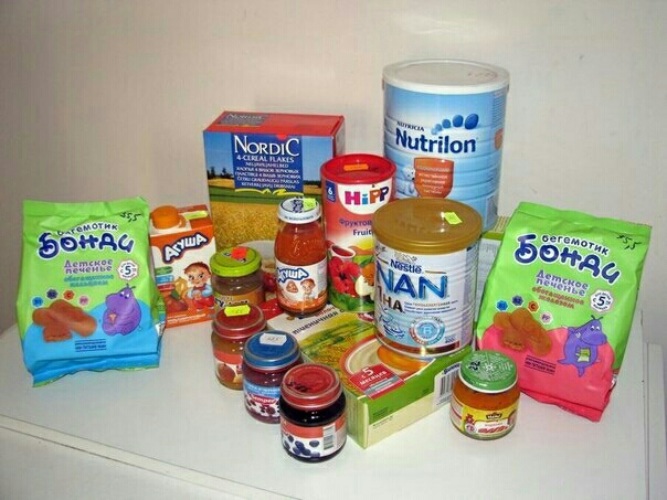 The cuts and bruises caused by that brick wall were not in vain after all, and the future looks very bright indeed.
The cuts and bruises caused by that brick wall were not in vain after all, and the future looks very bright indeed.
Product question. How to prepare baby food for the future. BelPressa
Those who choose the second option eventually realize that they cannot do without blanks, unless you are a robot or you have a bunch of helpers. How to prepare baby food for the future? Belgorodskiye Izvestia collected practical advice, and pediatrician Antonina Zayeva told how not to harm the baby and make food as healthy as possible.
Purchased no worse than
Contrary to established beliefs, doctors recommend feeding young children with commercially prepared complementary foods, because the chemical and microbiological safety of their composition can be guaranteed. In such products, the degree of grinding of raw materials corresponds to the age of the child. Also among the advantages are a long shelf life, homogenization and a wide range.
“If a mother decides to prepare food for her baby on her own, then the food must be prepared with the maximum benefit for the child.
In frozen foods, the chemical composition practically does not change, but the amount of vitamins and minerals decreases. And the organoleptic properties also change: taste and smell, cellular structure. With conventional freezing, about 35% of the original quality of the product is lost, and with shock or acoustic freezing, 10% is lost,” said Antonina Zayeva.
She notes that it is better to freeze food in vacuum packaging: this way their taste will suffer less. It is also important to write the date of freezing and observe the terms and conditions of storage.
Vitamins for all seasons
In summer or early autumn it is useful to freeze vegetables for the winter, especially if they are grown in your own garden. But if it is not there, then it is quite possible to buy and freeze it. In any case, vegetables will cost more in winter. In the cold season, their assortment is smaller, and the taste is worse. Most often, zucchini, cauliflower, broccoli, green peas, bell peppers and tomatoes are frozen for children. This is usually done in plastic bags, after washing the vegetables and cutting them into pieces. It is better to freeze in small portions, so that later it is convenient to get and cook. You can also freeze various berries. They are convenient to use for making fruit drinks and compotes.
This is usually done in plastic bags, after washing the vegetables and cutting them into pieces. It is better to freeze in small portions, so that later it is convenient to get and cook. You can also freeze various berries. They are convenient to use for making fruit drinks and compotes.
“Frozen vegetables can be stored for an average of 6 to 12 months at -18°C. At -12 ° C, the shelf life is reduced to 30 days, and at -8 ° C - to 7. You can also freeze ready-made vegetable puree. But you have to use it within a month. Quick-frozen fruits are stored for no more than a year, and berries - 9 months," said Antonina Zayeva.
Meat is always at hand
For a child who already chews well, you can make semi-finished products and store them in the freezer. These can be meat or fish cutlets, meatballs, meatballs, in which, in addition to meat, vegetables and cereals are added if desired. They will always be at your fingertips, all you have to do is get them and cook them.
Cooking meat can be frozen in advance in small pieces. Put it in bags and sign it so you don't forget what's in it. You can also store ready-made meat in the freezer, dividing it into the portions you need in terms of volume.
“However, it lasts longer if it is frozen in large blocks. So, it is recommended to store a chicken carcass at a temperature not higher than -12 ° C for no more than 8 months, and divided into parts - 1-3 months. Beef is stored at -12 ° C for 8 months, but pork is only 5 months. The lower the temperature, the longer the food can be stored. Fish at -18 °C can be stored for 6 to 10 months. Frozen ready-made meat dishes are stored on average up to 30 days, and semi-finished products from 1 to 3 months,” said Antonina Zayeva.
Puree to eat immediately
— How long can freshly prepared vegetable, fruit and meat baby food be stored?
— Refrigerated for up to 24 hours. During this time, the growth of pathogenic bacteria is minimized.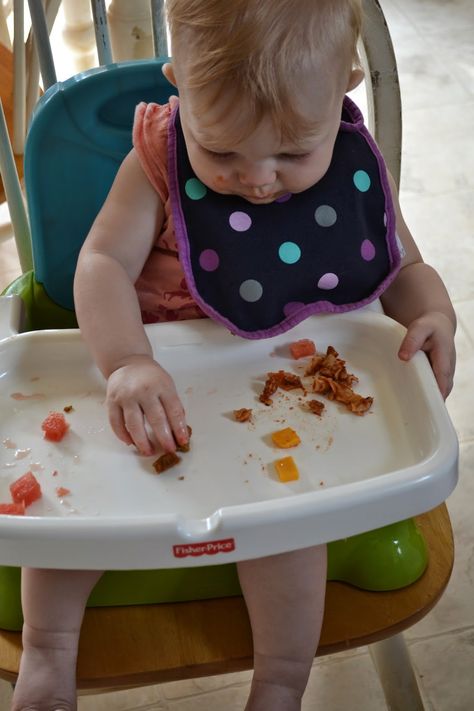 You can freeze vegetable broths to make a quick soup or dilute porridge. But meat is not recommended until 1.6 years, because when cooking from meat, chemical and biological active substances, fats, salts, traces of feed, antibiotics that were given to the animal get into the broth. When using such broths, the child's enzyme system may fail. Try rich bone broths from pork, lamb, beef after 3 years, advises Antonina Zaeva.
You can freeze vegetable broths to make a quick soup or dilute porridge. But meat is not recommended until 1.6 years, because when cooking from meat, chemical and biological active substances, fats, salts, traces of feed, antibiotics that were given to the animal get into the broth. When using such broths, the child's enzyme system may fail. Try rich bone broths from pork, lamb, beef after 3 years, advises Antonina Zaeva.
She notes that food must also be defrosted according to certain rules: do it gradually and on the bottom shelf of the refrigerator. Then too much juice is not released and the maximum amount of useful substances is preserved.
- Is it worth it to roll up jars of mashed potatoes yourself?
— I do not recommend canning baby food at home, because sugar, salt, vinegar are usually added as a preservative, and these substances are not used to feed children. It is also impossible to ensure sterility at home, - says Antonina.
Really, you should not compare homemade puree with store-bought. After all, it is closed in jars using a certain technology. At the factory, the puree passes through brewers, is sterilized, and rolled up with lids in a vacuum seamer. The jars are sterilized or pasteurized, and then quenched. It is impossible to repeat all this at home.
After all, it is closed in jars using a certain technology. At the factory, the puree passes through brewers, is sterilized, and rolled up with lids in a vacuum seamer. The jars are sterilized or pasteurized, and then quenched. It is impossible to repeat all this at home.
Read also
"Eat, otherwise the grandmother will take it." What bad habits in the diet of children is better to forget 27 Feb 2023 18:08
Does the hare like compote? How to expand your child's vocabulary 10 Feb 2023 19:42
5 thousand families in the Belgorod region were compensated for the cost of baby food 06 Jan 2023 16:30
5 thousand Belgorod families received compensation for buying baby food this year 19Nov 2022 16:00
Stocks wisely.
 How to store cereals at home 08 Apr 2022 13:55
How to store cereals at home 08 Apr 2022 13:55 VRF News
Defrosting and serving baby food. Your baby from birth to two years old
Defrosting and serving baby food. Your baby from birth to two yearsWikiReading
Your baby from birth to two years
Sears March
Contents
Defrosting and serving baby food
Frozen meals should not be thawed at room temperature for long periods of time. When it's time to use frozen baby food, try these tips:
• For slow defrosting, place one serving or all-day supply in the refrigerator and leave for three to four hours.
• For quick defrosting use an electric defrost or place a frozen cube or open jar in a heatproof small container and place in a small saucepan. Fill the pot with water just short of the rim of the food container. Defrost and reheat over medium heat, stirring occasionally to heat evenly.
Defrost and reheat over medium heat, stirring occasionally to heat evenly.
• Before giving baby food to a baby, be sure to mix it thoroughly and taste to make sure there are no areas too hot for the baby. Touch the product with your upper lip each time you load another spoon. Even the smallest amount of food that is too hot can teach a child not to trust what lies in the spoon approaching him. You can better check the temperature with your finger.
• Because microwave heating can create hot spots in food that can burn your child's mouth, we do not recommend this method. If you choose a microwave, be very careful to stir and always try a little yourself to see if the food is evenly heated before feeding your baby.
• To avoid wasting food, spoon feed your baby the amount you think he can handle. If he wants more, use a clean spoon to place the topping on his plate. You can store the rest of the dish in the refrigerator for two days, but only if saliva does not get into it.
Some babies don't eat "baby food" at all, and all this information on how to make it can be skipped if your baby tolerates a fairly firm texture, refuses solid foods for a long time, can't stand being spoon-fed, or transitions immediately to hand feeding. Some mothers really go into making baby food; others simply cook for the whole family and mash a portion for the child with a fork.
This text is an introductory fragment.
Table and chair
Table and chair Do two exercises with your child and ask him to guess where the chair turned out and where the table turned out. Riddle No. 1: Place your left palm vertically up. From below, put the fist of your right hand with your thumb towards you. (Chair) Riddle #2: Clench your left hand into a fist. Top
Top
Tip 12 More variety, please
Tip 12 More variety on the table, please Almost like adults These adults are strange people - we are with you. We trumpet on all corners that food should be as diverse as possible: only in this way, they say, the body will receive everything it needs. For breakfast we eat one thing, for lunch - another, for dinner
Power mode
Diet • Food should be fresh and look appetizing. • It is very important that meals take place at the same time. Then you will be able to ensure a regular supply of nutrients to build the growing tissues of the fetus, uterus, mammary glands, amniotic
Manufactured baby foods
Industrial baby food products What applies to baby food products of industrial production for children of the first year of life • Canned fruit, vegetable and fruit and vegetable juices and purees. • Dry instant cereals and
• Dry instant cereals and
Level 3: submission
Level 3: Submission The methods of presenting impromptu speeches are not much different from presenting prepared speeches. At the third level, you will work on gestures, pauses, eye contact, intonation, and other delivery methods. The goal of this level is
"To the table!"
"To the table!" The rhythm of the life of a French family is built around this sacred phrase, because the ritual of eating at a common table is the most important moment in learning good manners. It hardly needs to be reminded that the main dishes of French cuisine must be served and tasted
They put him at the table, and he put his feet on the table
They put him at the table, and he put his feet on the table It happens. We just can’t stand it, just to eat. And antics, and fidgeting in a chair, and a pigsty in a plate. Again, let's look into the dining room, where they dine in silence and peace, without quarrels and antics. But here is a two-year-old little girl acting up at the table,
We just can’t stand it, just to eat. And antics, and fidgeting in a chair, and a pigsty in a plate. Again, let's look into the dining room, where they dine in silence and peace, without quarrels and antics. But here is a two-year-old little girl acting up at the table,
2.3. Round table for teenagers: "How do friendships develop and sometimes break?"
2.3. Round table for teenagers: "How do friendships develop and sometimes break?" For modern teenagers, it is more difficult to get to know each other even in the courtyard of the house on the playground than for the previous generation of children. Gone are many traditions of courtyard games, which in
Help the nanny set the table
Help the nanny set the table They want to have breakfast in the group, Everyone around is in a hurry to help Carry dishes on the tables.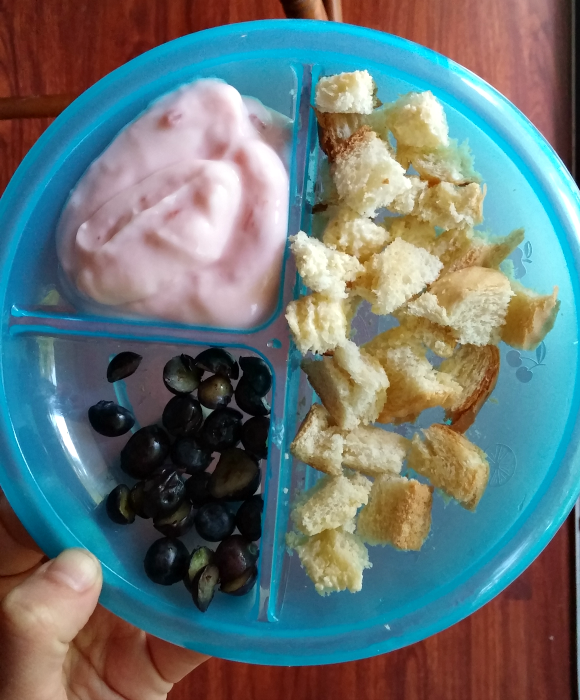 Only the Hedgehog said: - I won't! I won't go, I'll sit And I will look at you! I don't want to help Better to just wait. It's unpleasant for everyone. All Hedgehog
Only the Hedgehog said: - I won't! I won't go, I'll sit And I will look at you! I don't want to help Better to just wait. It's unpleasant for everyone. All Hedgehog
Wash your hands before you sit down to eat
Before you sit down at the table, wash your hands On the birthday of the Frog Her friends gathered. frolicked, played And then they began to have lunch. Only one thing was forgotten: The guests didn't wash their hands! Treats at the tables They took it with dirty hands. And the frog, probably It was
Making your own baby food
Making baby food with your own hands Good nutrition, or lack thereof, can have an impact on your child's health and behavior. It's worth spending a couple of hours a week preparing meals for your child. You know what it's made of and you can cook
Packaging and storage of homemade baby food
Packaging and storage of homemade baby food Store your home-cooked meals in the freezer.

